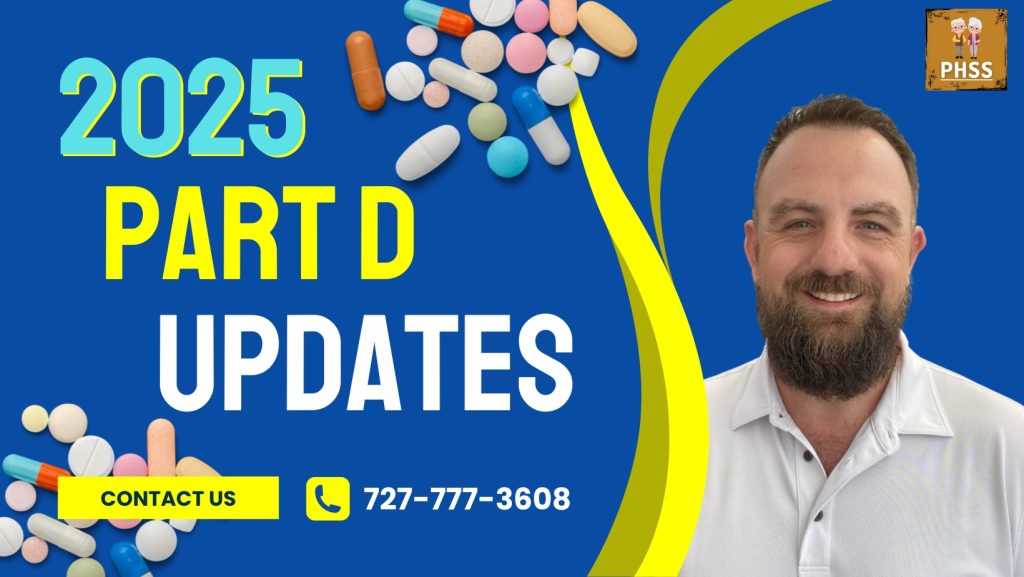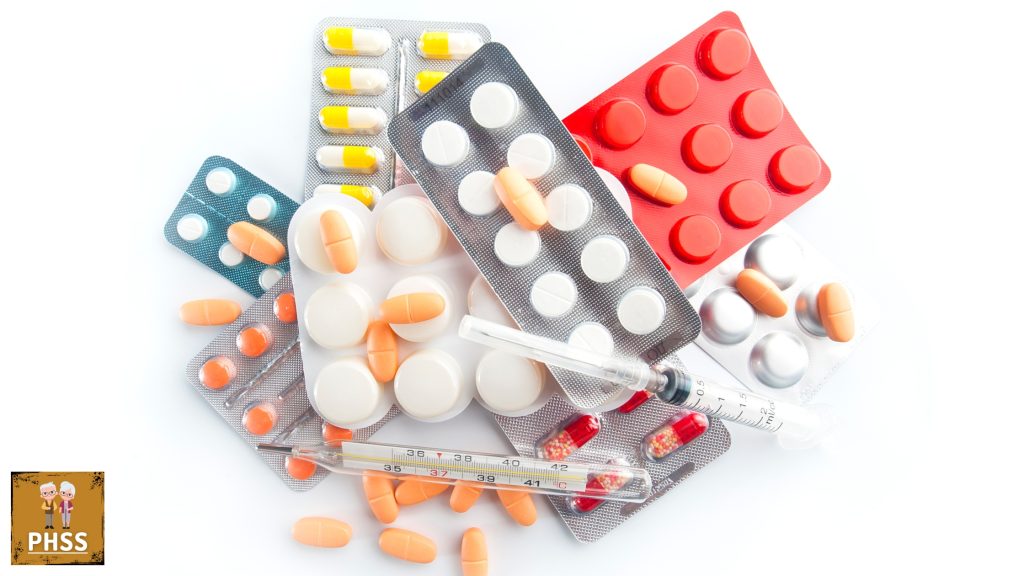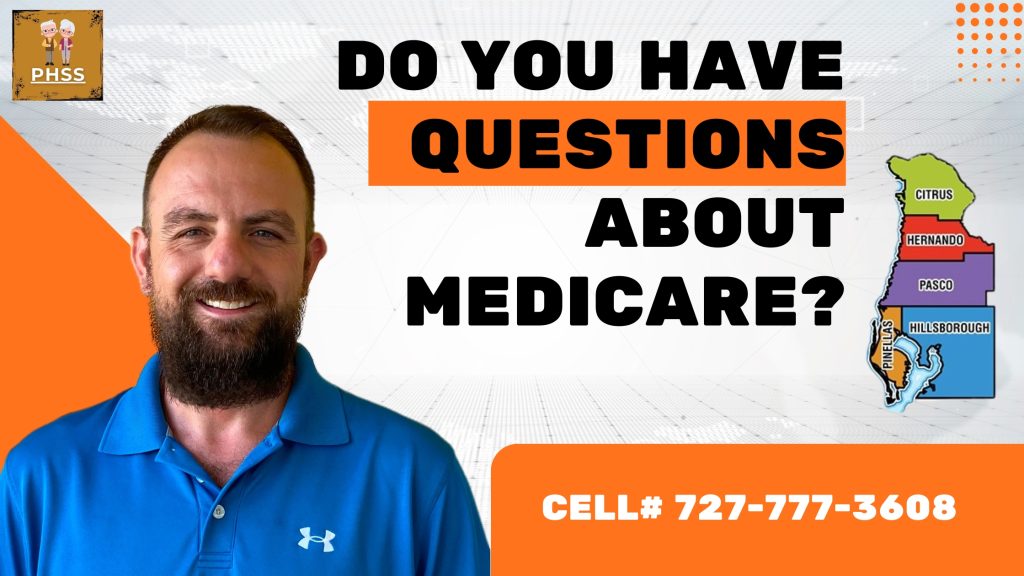2025 Part D Updates

In 2022 the Inflation Reduction Act was passed and it started being implemented in stages. Two changes went into effect in 2023, two in 2024, and the final two take effect January 1, 2025. Below, we describe the reforms and what people enrolled in Medicare Part D plans need to know.
In this article we will go over the following topics:
- What is Medicare Part D
- What is the Inflation Reduction Act
- What happened in 2023
- What happened in 2024
- 2025 Part D Updates
I intend to answer most of your questions in this article, but if I miss something please email me at daniel@pascohernandoseniorservices.org and I will answer your question.
What is Medicare Part D
Medicare drug coverage (Part D) helps pay for your prescription drugs. It’s optional and offered to everyone with Medicare.
There are 2 ways to get Medicare drug coverage (Part D):
Medicare Drug Plans: These plans are sold by private insurance companies that have a contract with Medicare. If you have Medicare Part A or B you can buy a stand-alone prescription drug plan to help you pay for your drug costs. You have to live in the plan’s service to be able to buy it.
2. Advantage Plans or other Medicare health plans with drug coverage. You can sign up for an Advantage plan or other Medicare health plan that offers prescription drug coverage as part of their plan.
What is the Inflation Reduction Act?
On August 16, 2022, President Biden signed the Inflation Reduction Act into law. The law has many parts from clean energy to taxes and many other aspects that affect our economy but today here we are talking about the part of the law that focuses on Medicare prescription drug costs. The Inflation Reduction Act is helping lower prescription spending for patients insured by Medicare. The Medicare reforms apply to all standalone Medicare prescription Part D plans and Medicare Part C or Medicare Advantage plans that have prescription drug coverage. Medicare HMO plans are included if they offer drug coverage.
In the United States, 1 in 4 adults report difficulty affording prescriptions. High out-of-pocket drug costs are associated with increased rates of hospitalization, and mortality. Cancer medications are very expensive in the United States and the standard-of-care medications for prostate cancer, breast cancer, leukemia, and multiple myeloma include medications that have required more than $10,000 in annual out-of-pocket spending. Fortunately, a new law is now in effect to help lower prescription spending for patients insured by Medicare.
The Inflation Reduction Act will enables Medicare to negotiations drug prices for the first time in history. The number of drugs subject to price negotiation will start at 10 Part D drugs for 2026 and expand to substantially more drugs by 2029. The negotiation provision should also contribute to lower out-of-pocket costs for patients because coinsurance is calculated from list prices.
The Inflation Reduction Act also included a provision that prevents “Medicare Part D base beneficiary premiums” from increasing more than six percent each year. Unfortunately, the base beneficiary premium is not the same as the amount that Part D enrollees pay for coverage, and the law did not cap the growth in individual plan premiums to six percent. Health plans use the base beneficiary premium to calculate their plan’s basic premiums, but they also consider other factors.
What happened in 2023?
Vaccines:
Effective January 2023, Medicare Part D drug plans started covering most vaccines at no cost to you. All adult vaccines recommended by the CDC’s Advisory Committee on Immunization Practices are covered with no out-of-pocket costs. Your Medicare drug plan won’t charge you a copayment or apply a deductible for vaccines you get for things like shingles, whooping cough, tetanus, and more.
Insulin:
In 2020, the Trump Administration established a voluntary, time-limited model under the Center for Medicare and Medicaid Innovation known as the Part D Senior Savings Model. Under this model, participating Medicare Part D prescription drug plans covered at least one of each dosage form and type of insulin product at no more than $35 per month. The model was in effect from 2021 through 2023, and less than half of all Part D plans chose to participate in each year.
In 2022, President Biden signed into law the Inflation Reduction Act, which included a provision that requires all Part D plans to charge no more than $35 per month for all covered insulin products and also limits cost-sharing for insulin covered under Part B to $35 per month. Deductibles no longer apply to insulins under Part D or Part B. These provisions took effect in 2023.
What happened in 2024?
EXTRA HELP:
Beginning in 2024, the Inflation Reduction Act (IRA) expands eligibility for the Part D Low Income Subsidy (LIS), also called “Extra Help.” This important program helps people afford their medication and coverage.
In 2024 and beyond, everyone with Extra Help pays a $0 premium, $0 deductible, and a reduced amount for both generic and brand-name drugs.
For people who previously had any level of Extra Help and continue to meet the qualifications, these expanded savings will apply automatically; they do not need to reapply.
Catastrophic Phase:
As of January 1, 2024, people with Medicare Part D are no longer responsible for 5% prescription cost-sharing in the ‘catastrophic phase’ of coverage.
What's New In 2025
In 2025, Part D plans can have a deductible up to $590 and your yearly out-of-pocket drug costs will be capped at $2,000. Once you reach this limit in 2025 (from your out-of-pocket spending plus certain payments other people or entities make, including Medicare’s Extra Help program) you won’t have to pay a copayment or coinsurance for covered Part D drugs for the rest of the calendar year. The new cap doesn’t include monthly premiums you pay.
The 2025 Part D base premium is $36.78, but actual premiums vary depending on your location and plan.
In 2025 a new Prescription Payment Plan is a new option to help you manage your out-of-pocket costs. You will be able to spread out your prescription drug costs across the whole calendar year. Starting in 2025, anyone with a Medicare drug plan or Medicare health plan with drug coverage (like a Medicare Advantage Plan with drug coverage) can use this payment option.
If you select this payment option, each month you’ll continue to pay your plan premium (if you have one), and you’ll get a bill from your health or drug plan to pay for your prescription drugs (instead of paying the pharmacy). There’s no cost to participate in the Medicare Prescription Payment Plan.
If you live in Pasco, Hernando, Pinellas, or Hillsborough county, we would love to help you with anything regarding Medicare or Final Expenses . Since 2012 we have been helping others just like you in our community be more prepared for the future.
I intend to answer most of your questions in this article, but if I miss something please email me at daniel@pascohernandoseniorservices.org and I will answer your question.



